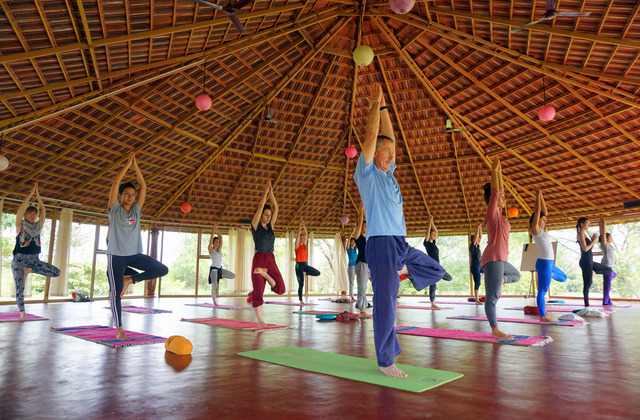Yoga started its development into human progress somewhere in the range of 10,000 years prior through the Tantric convention. Proof of divinities taking after Shiva and Parvati was found in the Indus Valley development after archeologists started to unearth various statues from antiquated city grounds, the memory of the multi-year-old custom. This was the yoga of the pre-Vedic, pre-Aryan age, in which the top convention thrived all through different pieces of India. Shiva being the focal figure in a lion's share of these recuperated rules offers proof to the recorded precept that means Shiva is the organizer of the yogic framework.
In the yogic convention, Shiva is customarily viewed as the image of incomparable awareness. His accomplice and counterpower is Parvati, who speaks to preeminent information, will, and activity. For about the is additionally in charge of all creation as she is the acting power inside the universe. This power or vitality is otherwise called kundalini shakti, the infinite power which is torpid inside every single living being. Our Rusty is additionally viewed as the mother of the whole universe. Her effortlessness and direction are in charge of the freedom of the spirit, discharging the people from the subjugation of common issues. Concho is said to be conferred to people through Parvati out of adoration and empathy for her kids. Yoga was a sign of an augmentation of the Tantric framework. Similarly, as Shiva and Parvati are indistinguishable, so too are tantra and the yogic framework.
Tantra is derived from two Sanskrit words, tanoti and trayati. Trayati implies freedom and Tanoti is actually interpreted as an extension. We would then be able to expect that tantra is the study of extending awareness and freeing the vitality known as shakti inside the body. Tantra is the best approach to accomplish freedom from the servitude of the world in the physical recognizable proof with the body and items related to it.
In tantra, we seek after the way of freedom by first understanding and picking up knowledge about the confinements and limits of the body and brain. After we have comprehended these confinements, we at that point start to investigate the extension of awareness which in the end prompts the freedom of vitality inside the body. After we have crossed these different levels the individual awareness grows and is freed into the all-inclusive cognizance which pervades the whole universe.
The yoga of yesteryear
For quite a while in history, yoga was a mystery framework with its practices and methods escaping general visibility. In old occasions, yoga was an oral convention, its lessons and practices number engraved or composed on material. Just through the master-devotee relationship were the lessons of yoga uncovered, and just to the individuals who are prepared to think about the otherworldly practices and strategies. This framework was exceptionally profitable and helpful as it guaranteed clear understanding and a solid connection between the follower, and the master, and profound lessons. Much significance was given to the individual experience of the yogic framework, and the right way was illustrated by the master who helped evacuate any disarrays or obliviousness concerning the otherworldly practices and systems. Just through true yearning with the master's guide their followers; supporters who sought after an excessive amount of scholarly examination or were looking for the way of yoga in Dubai to pick up shelters or powers were denied the lessons and access to the learning of yoga.The first occasion when yoga was written in the book are engraved on paper was inside the antiquated tantras. Later it was likewise uncovered through the Vedas which were composed at some point around 500 BC. Even though the Vedas don't give a specific reference to any profound practices or procedures, they do you know the arrangement of yoga through allegories and emblematic portrayal. It is said that the Vedas were uncovered to me rishis and holy people who were drenched in a profound yogic condition of meditation known as samadhi.
It wasn't until the Upanishads that yoga started to take an unmistakable shape and perceptible structure inside a composed framework. The Upanishads contained the substance of the Vedas, uncovering the most basic focuses recorded in the various books that altogether made the Vedas. The Upanishads are said to be the climax of the Vedas and together they make up the Vedantic.
The following noteworthy message throughout the entire existence of yoga was the Patanjali yoga Sutras which are said to have been written in the second century A.D. Patanjali's yoga sutras framed the raja yoga framework, an unequivocal and brought together point of view of yoga with references to systems, theory, and profound standards. Patanjali's yoga sutras are frequently alluded to as the eight overlapping ways of yoga. The eighth succession comprised yama(self-limitation), niyama (self-recognition), asana, pranayama, pratyahara(withdrawal of the senses),dharana (fixation), dhyana (meditation), and samadhi. Regardless of whether rehearsed in arrangement or as a total framework the eight overlap ways gave a reasonable point of view of the profound way. It additionally gave a framework for how to achieve the unification of individual cognizance with the all-inclusive universe.
Later in the 6th century BC yoga started to embrace the Buddha's meditation rehearses just as the moral and good way of thinking that later turned into the blueprint for Buddhism. Tragically this change and adjustment evacuated a great deal of the preliminary practice that was planned by the yogis to set one up for meditation rehearses, huge numbers of which are essential and periodically imperative to the primer arrangement for thought and fixation.
Source

Comments
Post a Comment